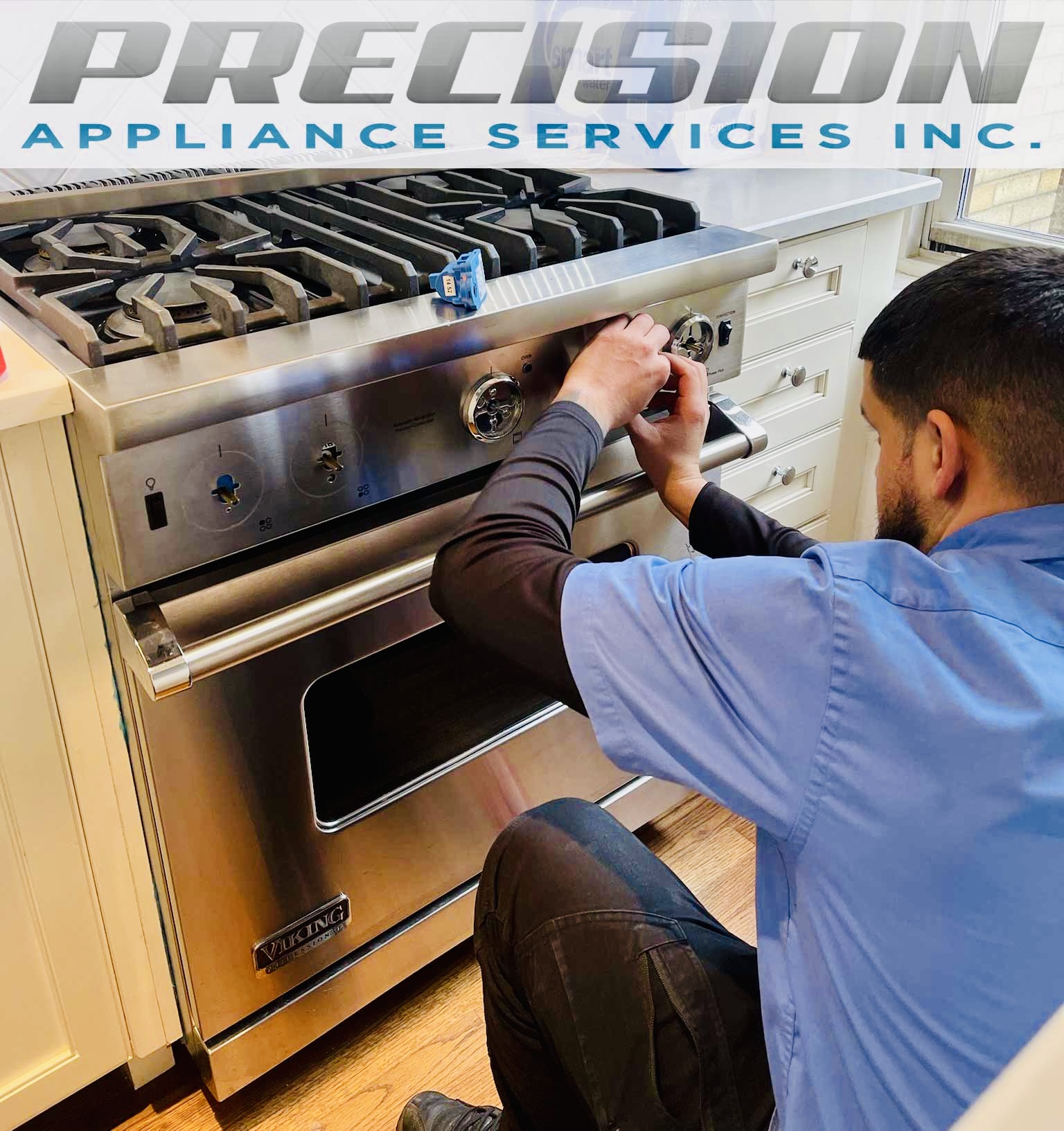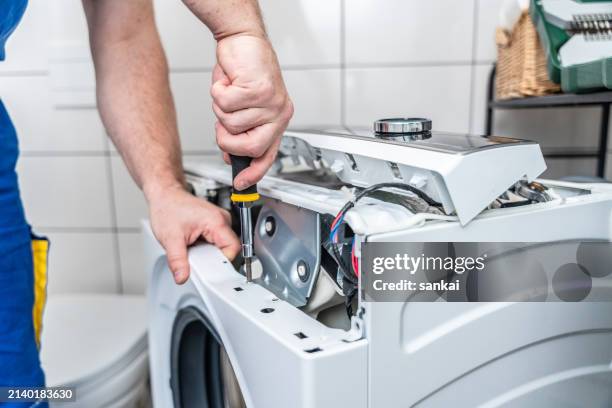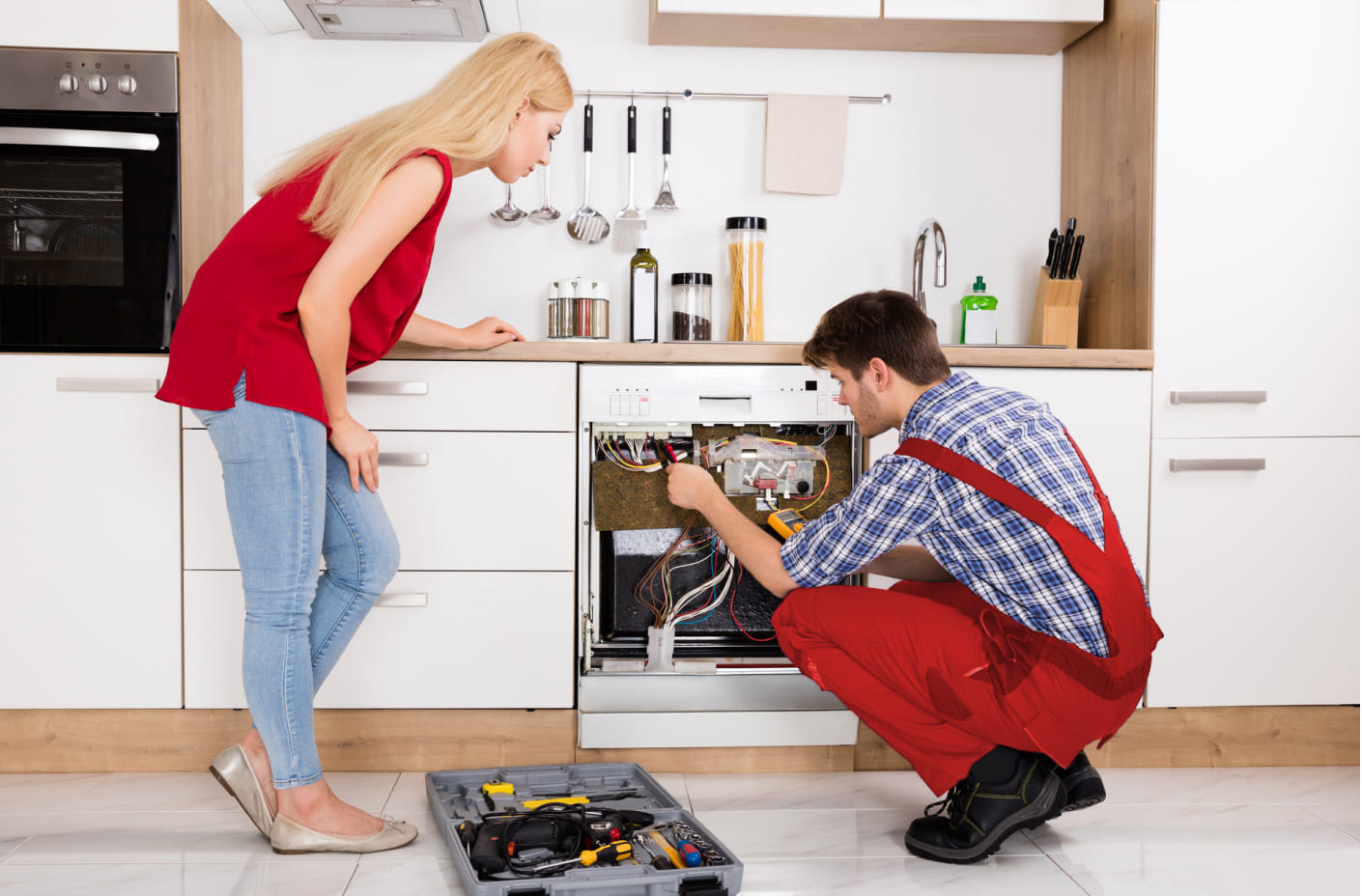The Ultimate Overview to Understanding Device Repair Work at Home
When your refrigerator quits cooling down or your oven declines to warm, it can feel frustrating. Understanding appliance repair work at home can save you time and cash. You'll discover to acknowledge signs and symptoms, utilize important tools, and adhere to a systematic troubleshooting process. Prior to you begin, there are important safety and security precautions you need to take into account. What are one of the most common issues, and exactly how can you fix them? Let's discover the basics.
Common Device Issues and Their Signs
When your home appliances start breaking down, it's necessary to identify the indications early on. Disregarding them can result in bigger issues and costly repair work. If your fridge isn't cooling down correctly, you might notice warm areas or condensation creating. This could indicate a stopping working compressor or an obstructed vent.Your dishwashing machine might reveal problems with unclean dishes or unusual noises throughout cycles. If you listen to grinding or clanking, it's time to investigate.A washing maker that will not rotate or drain can leave you with soggy laundry, recommending a clogged drainpipe or a malfunctioning pump.Lastly, if your oven's temperature level seems off or it takes permanently to preheat, you might be taking care of a faulty thermostat. By staying alert to these symptoms, you can address issues before they rise right into major fixings.
Important Devices for Appliance Fixing
When you're tackling home appliance fixings at home, having the right devices is essential. Standard hand tools like screwdrivers and pliers will certainly help you take apart and deal with various home appliances, while electric testing gadgets guarantee you're working securely with electrical wiring. Allow's review what you need to get going on your repair journey.
Basic Hand Devices
Having the right tools is essential for effective home appliance repair service in your home. Beginning with a reliable screwdriver set, consisting of both flathead and Phillips kinds, as screws are common in appliance assembly. Pliers are likewise essential; they aid with gripping, turning, and reducing wires or small elements. A pair of needle-nose pliers can reach tight spots conveniently. You'll require an excellent flexible wrench for tightening or loosening up nuts and screws. An energy blade is convenient for puncturing product packaging or insulation. Don't neglect a tough workbench or surface to safely organize your devices and components. With these basic hand tools, you'll be well-prepared to tackle most home appliance repair services that come your way.
Electrical Screening Gadgets
Along with standard hand devices, electrical testing devices play a necessary role in device repair. These devices aid you diagnose electrical concerns and assurance home appliances function securely. A multimeter is important; it determines voltage, current, and resistance, permitting you to pinpoint issues promptly. A non-contact voltage tester is an additional must-have, allowing you identify live cables without making straight contact, improving your security. Clamp meters are wonderful for measuring present flow in cords without detaching them, conserving you effort and time. Additionally, circuit testers can promptly examine if outlets are functioning properly. By making use of these devices, you'll simplify your troubleshooting procedure and improve your repair work skills, making appliance upkeep a great deal easier.
Step-by-Step Guide to Diagnosing Home Appliance Issues
When your home appliance acts up, it can be aggravating, but diagnosing the problem does not have to be frustrating. You'll find out to determine usual troubles and apply reliable troubleshooting techniques. Let's go through the steps to obtain your device back in functioning order.
Usual Appliance Troubles

Troubleshooting Methods Explained

Repairing Major Cooking Area Devices: A Closer Look
Have you ever questioned exactly how to tackle typical problems with your cooking area devices? Fixing significant kitchen area appliances like refrigerators, ovens, and dishwashers can be easier than you believe. Start by recognizing the issue-- whether it's a fridge not cooling or an oven that won't warm. Often, a simple reset or inspecting the power source can fix the issue.For refrigerators, clean the condenser coils and examine the door seals. If your oven's not home heating, evaluate the heating component and thermostat. Dishwashing machines may simply require a tidy filter or a reset to obtain them back at work. Always disconnect the appliance before diving into repairs to guarantee your safety.Don' t neglect to get in touch with the individual manual for certain repairing ideas associated with your model. With a little bit of perseverance and the right devices, you can with confidence deal with device repairs and save money while doing so!

Troubleshooting Laundry Devices: Tips and Techniques
When your laundry devices start breaking down, it can feel frustrating, but fixing them does not need to be a hassle. Begin by examining the power supply. Validate the device is connected in and the electrical outlet is functioning. Next off, evaluate the door or lid button; a defective button can protect against the device from operating.For washers, if it's not rotating, look for out of balance lots. Rearranging the clothing could address the concern. If your dryer isn't heating, clean the dust filter and examine the air vent for blockages.Listen for uncommon noises; they can suggest a problem. If your home appliance is dripping, inspect the hose pipes for splits or loose links. Record any type of error codes presented on digital displays, as they can assist you in determining the issue. Lastly, consult the customer handbook for specific fixing tips connected to your model.
Security Preventative Measures to Take Throughout Fixes
Prior to you begin any type of home appliance fixings, it's necessary to focus on safety to stop crashes or injuries. Unplug the appliance or turn off the circuit breaker to assure no power reaches it while you work. Usage protected tools to lessen the threat of electrical shock. Use safety goggles and handwear covers to shield yourself from sharp sides or debris (Dependable Refrigeration & Appliance Repair Service Washing Machine Repair).Make particular your workspace is clean and well-lit, so you can see what you're doing. Maintain children and animals far from the location to prevent diversions and possible risks. If you're managing gas home appliances, be additional careful; look for leakages prior to proceeding.Take your time, and do not rush through repairs. If you really feel uncertain regarding any type of action, it's much better to stop and research than to think. Following these safety measures will aid develop a safer setting for your DIY home appliance repair service task
When to Call a Professional for Assistance
Just how do you know if it's time to call a professional for appliance fixings? If you have actually attempted standard troubleshooting without success, it's a clear indicator. If your device still will not start or reveals uncommon sounds after resetting it, do not think twice to look for specialist help.When you discover leaks, smoke, or melting smells, focus on security and call a pro quickly. These concerns can result in even more significant damages or pose dangers to your home.Also, if your home appliance is under warranty, calling a specialist is typically the most effective course. They can ensure that repair work will not invalidate your warranty, conserving you money in the long run.Finally, if you're unclear or unpleasant with intricate repairs, it's smart to leave it to the professionals. Keep in mind, tackling difficult problems without the right expertise can cause expensive blunders. Count on an expert when doubtful!
Often Asked Questions
Just How Can I Prevent Device Troubles in the Future?
To stop device issues in the future, you ought to do regular maintenance, check for wear and tear, clean reliable appliance repair filters, and prevent overloading. Remaining aggressive will certainly aid expand their lifespan and maintain them running efficiently.
What Are one of the most Typical Do It Yourself Home Appliance Repair Work Mistakes?
You could forget safety precautions, miss troubleshooting actions, or make use of inaccurate devices when trying DIY home appliance fixings. Rushing the process or disregarding manufacturer standards can bring about more considerable issues and pricey blunders. Keep client and educated!
Just how Do I Know if a Component Demands Substitute?
You can inform if a component requires substitute by looking for uncommon sounds, leaks, or inconsistent efficiency. If the appliance struggles to run properly or reveals visible damage, it's likely time for a replacement.
Can I Utilize Generic Parts for Appliance Repairs?
Yes, you can use generic components for device fixings, but ascertain they're compatible - Dependable Refrigeration & Appliance Repair Service Dryer repair near me. Common components could conserve you cash, but they could impact performance or longevity, so weigh your choices thoroughly before choosing
What Warranties Cover Appliance Repairs?
A lot of home appliance service warranties cover repair work for manufacturing defects, but they frequently leave out damage from abuse. Inspect your warranty terms thoroughly, as some could call for using qualified technicians and original components for protection to remain valid.